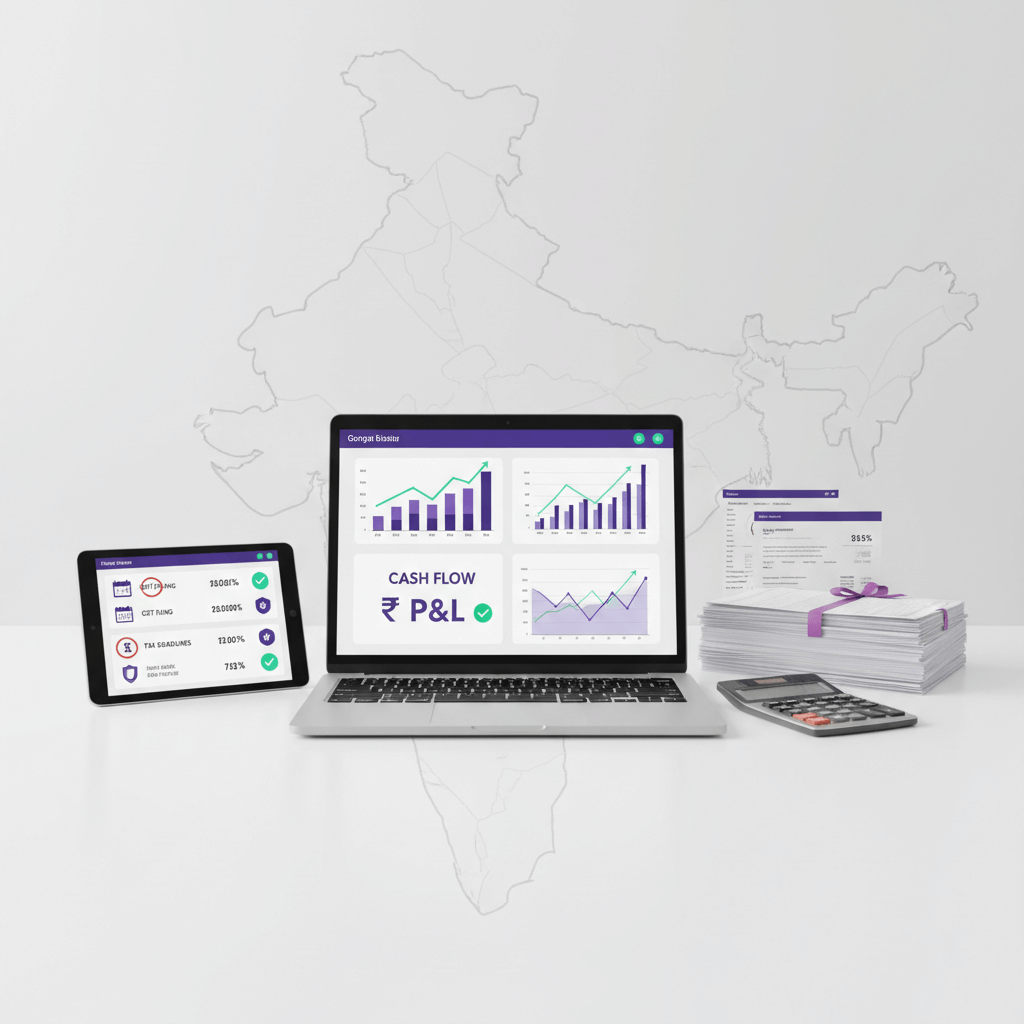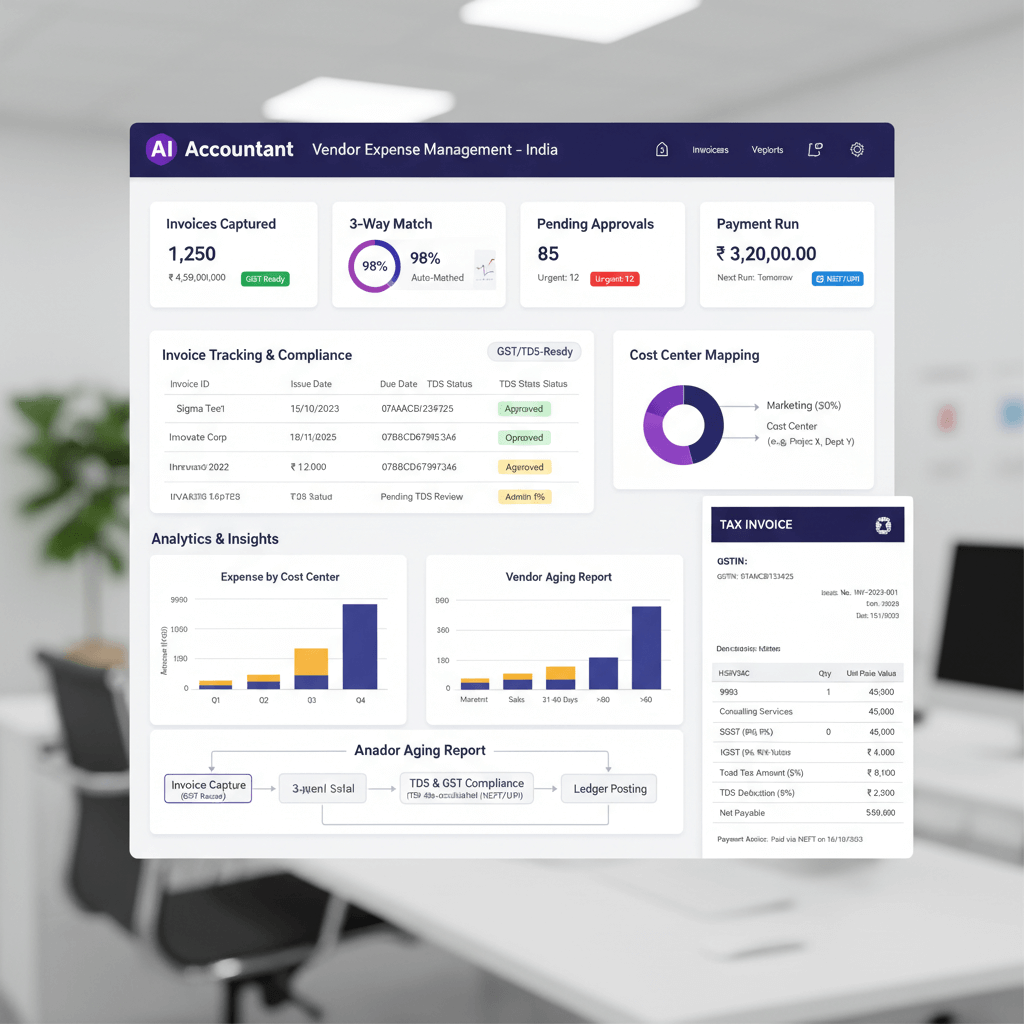Key takeaways
- Automation transforms manual billing and time tracking into streamlined workflows, eliminating late-night invoice sessions.
- Accurate time capture recovers lost revenue and provides data for strategic decisions on pricing and resource allocation.
- Integration between time tracking and accounting platforms removes manual data entry and reduces errors.
- Automated invoicing and recurring billing enhance cash flow predictability and professional presentation.
- Subscription billing requires specialized workflows for renewals, compliance alerts, and revenue recognition.
- Key performance indicators such as time entry completion rates and invoice turnaround times measure automation success.
- Advanced features like AI insights, client portals, and predictive analytics offer further efficiency gains.
Table of contents
- Why Accurate Billing and Time Tracking Matters for CA Firms
- Components of Efficient Billing and Time Tracking Workflows
- The Case for Automated Invoicing in CA Firms
- How to Track Billable Hours Effectively in CA Firms
- Managing Subscription Billing CA Services at Scale
- Tools and Platforms That Can Help
- Implementing Billing and Time Tracking Automation: Step by Step
- Challenges and Tips for Successful Adoption
- Measuring Success: Key Performance Indicators
- Advanced Features Worth Considering
- The Future of CA Firm Billing and Time Tracking
- Getting Started: Your Next Steps
- Conclusion
Why Accurate Billing and Time Tracking Matters for CA Firms
Here’s something every CA knows but rarely talks about: we’re terrible at tracking our own time. We’ll spend hours perfecting a client’s books, but when it comes to logging those hours, guesswork takes over.
The hidden cost of poor time tracking is massive. When you’re handling GST returns, ROC filings, audit work, and advisory services, every unbilled hour is revenue walking out the door. Studies show that professionals lose up to 25% of their billable time due to poor tracking habits. Think about it, if your team bills ₹2,000 per hour and loses just two hours per person per week, that’s over ₹2 lakh lost annually for a five-person team—enough to hire a junior associate.
Manual workflows make this worse. Paper timesheets get lost, Excel sheets crash, memory fails. Meanwhile, clients demand transparency, and your firm needs accurate data to make strategic decisions. Explore time tracking accounting and accountant time tracking software solutions to get started.
Components of Efficient Billing and Time Tracking Workflows
Building an efficient billing system isn’t just about buying software. It’s about matching workflows to the way CA firms operate.
- Timesheet software that fits reality: Look for one-click desktop timers or mobile apps that log time on the go.
- Seamless integration: Ensure your time tracking talks to platforms like Tally or Zoho Books. No copying and pasting.
- Real-time visibility: Monitor project progress, resource allocation, and identify bottlenecks before they impact delivery.
- Actionable reporting: Generate client profitability, staff productivity, and project duration insights.
Read more about Zoho Books automation tips for seamless data flow.
The Case for Automated Invoicing in CA Firms
Manual invoicing is where good intentions go to die. You track time diligently all month, then spend hours creating invoices.
“What used to take hours now takes minutes.”
Automated invoicing systems transform tracked time into professional invoices instantly. The software pulls entries, applies rates, adds expenses, and generates detailed invoices ready for review.
This is powerful for complex engagements—GST compliance, phased audit work, or mixed advisory fees. Recurring billing for retainers becomes effortless, improving cash flow predictability. See how AR automation can be the difference between growth and stagnation.
Payment tracking integrates natively so you know which invoices are paid, overdue, or disputed. Automated reminders maintain client relationships while ensuring collections don’t fall through the cracks. Learn about payment reminder automation.
How to Track Billable Hours Effectively in CA Firms
Effective hour tracking starts with good habits, but smart systems make those habits stick.
- Clear project codes: Define intuitive codes for GST compliance, audit work, tax planning, advisory services.
- Daily entries: Encourage logging time every day to capture accurate data and reduce end-of-week stress.
- AI suggestions: AI-powered tools can suggest entries based on calendar, email, and document activity. See AI accounting software automation.
- Automatic detection: Some systems monitor app usage and file access to reconstruct time entries.
- Mobile accessibility: Log time from client sites or on the move.
Use time data strategically for project scoping, resource planning, and pricing adjustments. Create accountability through regular reviews of unbilled hours and productivity.
Managing Subscription Billing CA Services at Scale
The CA industry is shifting toward subscription models, and traditional billing systems aren’t equipped for this change.
Subscription billing requires different thinking. Automate renewals, compliance alerts, and deliverable schedules for monthly, quarterly, and annual packages. Missing a GST filing for a subscription client damages relationships and creates liability. Discover GST filing automation to stay ahead.
Client reporting automation adds value by delivering regular updates on work completed and upcoming deadlines. Revenue recognition complexity is handled automatically to maintain compliance with accounting standards. Learn how AI reconciliation fixes the biggest headache in Indian accounting.
Scaling also requires workflow automation for client onboarding, document collection, and deadline tracking. See client onboarding automation.
Tools and Platforms That Can Help
Choosing the right software can feel overwhelming. Here’s a breakdown:
- AI Accountant: Automated reconciliation, intelligent dashboards, and integration with Tally and Zoho Books.
- TMetric: Cross-platform time tracking with one-click invoicing and profitability reports.
- Hubstaff: Automated timesheets, multi-rate billing, and budget monitoring alerts.
- Mango Practice: Cloud-based timers, calendar-to-time entry conversion, and practice management integration.
- Traditional options: Bill4Time, Practice Relief, BigTime IQ for extensive customization and workflow management.
Consider firm size, remote work needs, and subscription focus when evaluating options. Integration capability should be a key driver of your decision.
Implementing Billing and Time Tracking Automation: Step by Step
Successful automation requires careful planning and phased execution.
- Assess current processes: Document how your team tracks time and creates invoices. Identify pain points.
- Map ideal workflows: Define how time flows from logging to invoicing to payment and which integrations eliminate duplicate entry.
- Trial solutions: Use free trials, test with real data, and involve your team in evaluations.
- Plan data migration: Clean up client names, project codes, and historical records before import.
- Train thoroughly: Provide hands-on sessions, quick reference guides, and designate system champions.
- Phase implementation: Start with time tracking, add automated invoicing, then subscription billing.
- Monitor KPIs: Track time entry rates, invoice turnaround, unbilled hours, and collection efficiency.
- Review regularly: Schedule quarterly assessments to ensure systems still meet firm needs.
Challenges and Tips for Successful Adoption
- Staff resistance: Communicate benefits, address monitoring concerns, offer transparent support.
- Data quality: Clean and standardize data before migration; enforce clear entry standards.
- Integration complexity: Test thoroughly with vendors to avoid failure points.
- Change management: Reinforce training, provide support, and set realistic timelines.
- Security and compliance: Ensure systems meet professional standards for data protection.
- User feedback: Create channels for reporting issues, suggesting improvements, and sharing success stories.
Measuring Success: Key Performance Indicators
- Time tracking completion rates: Aim for 90% or higher to ensure consistent usage.
- Invoice turnaround time: Measure time from work completion to invoice delivery.
- Unbilled hours recovered: Compare before and after implementation for revenue gains.
- Collection efficiency: Track payment times, overdue percentages, and success rates.
- Client satisfaction: Gather feedback on billing clarity and timeliness.
- Staff productivity: Monitor billable versus administrative time and satisfaction scores.
- System utilization: Review usage analytics to ensure feature adoption.
- Revenue per employee: Assess overall practice efficiency improvements.
Advanced Features Worth Considering
- AI-powered insights: Suggest rate adjustments, flag unprofitable clients, predict overruns. See AI Accountant case studies.
- Mobile expense tracking: Capture travel and meals seamlessly with time entries.
- Client portal integration: Allow clients to view progress, approve time, and access invoices.
- Automated approvals: Route invoices for partner sign-off while maintaining audit trails.
- Predictive analytics: Forecast workload, capacity, and seasonal trends.
- Document management integration: Link time entries to specific deliverables for transparent billing.
- Multi-currency and multi-entity support: Serve international clients and group structures.
- Real-time dashboards: Provide partners immediate visibility into firm performance.
The Future of CA Firm Billing and Time Tracking
Technology trends are reshaping practice workflows every day.
- Artificial intelligence will suggest optimal rates based on market data and service complexity.
- Blockchain could create immutable work and time records for billing transparency.
- Voice activation will enable natural language time entry without interrupting workflow.
- Deeper integrations will connect billing to CRM, project management, and BI platforms.
- Predictive analytics will improve pricing strategies, client risk assessment, and cash-flow forecasts.
- Enhanced mobile capabilities will support remote and hybrid work models.
Getting Started: Your Next Steps
Ready to transform your firm’s billing and time tracking? Follow these steps:
- Audit current processes: Calculate time spent on billing administration and the cost of unbilled hours.
- Research solutions: Focus on systems that integrate with your platforms and match your firm’s size.
- Pilot program: Test automation with one client or service line to reduce risk.
- Invest in training: Plan for initial onboarding, ongoing support, and system optimization.
- Leverage networks: Connect with other CA firms to share best practices and lessons learned.
- Explore complementary automation: Consider bookkeeping, reconciliation, and reporting tools like AI Accountant.
- Set realistic timelines: Expect learning curves and focus on continuous improvement.
Conclusion
Automating billing and time tracking isn’t just about saving time and reducing errors. It’s about transforming your practice into an efficient, profitable, and scalable operation. The firms that embrace these technologies today will have significant advantages over competitors still struggling with manual processes tomorrow.
The question isn’t whether to automate, but how quickly you can implement systems that work for your specific practice. Start small, think big, and transform your operations one automated process at a time.
FAQ
How can I automate time tracking in my CA firm using AI Accountant?
AI Accountant offers automatic time detection by monitoring calendar events, email activity, and document usage. It suggests entries and can log hours in the background so your team spends less time on administrative work.
What integrations does AI Accountant support for billing and invoicing?
AI Accountant integrates seamlessly with Tally, Zoho Books, and popular practice management platforms. This ensures tracked time flows directly into invoice creation without manual data entry.
Can AI Accountant handle recurring subscription billing for compliance services?
Yes, AI Accountant automates recurring billing for monthly retainers and subscription packages. It generates invoices based on predefined terms and sends reminders for renewals and compliance deadlines.
How do I migrate existing time and billing data into AI Accountant?
Begin by cleaning up client names, project codes, and historical records. Use AI Accountant’s import tools to map fields and upload CSV files. Validate imported data before going live.
What KPIs should I track after implementing AI Accountant?
Monitor time entry completion rates, invoice turnaround times, unbilled hours recovered, and collection efficiency. AI Accountant provides dashboards to track these metrics in real time.
How does AI Accountant ensure data security and compliance?
AI Accountant uses encryption, role-based access controls, and secure data centers that comply with industry standards. Regular audits and backups protect client data at every stage.
Can AI Accountant suggest optimal billing rates based on past projects?
Yes, AI Accountant’s AI insights analyze historical time and profitability data to recommend rate adjustments for services and identify unprofitable clients.
Is there mobile support for logging time with AI Accountant?
AI Accountant offers a mobile app for iOS and Android. Users can start timers, log entries, and approve invoices from anywhere, ensuring no billable minute is lost.
How does AI Accountant help manage multi-entity and multi-currency billing?
AI Accountant supports multiple entities and currencies within a single account. It handles exchange rates and consolidation, providing accurate financial reporting across jurisdictions.
What training resources does AI Accountant provide for my team?
AI Accountant offers live webinars, on-demand video tutorials, quick reference guides, and a dedicated support team. You can also designate internal champions to facilitate adoption.

-01%201.svg)


